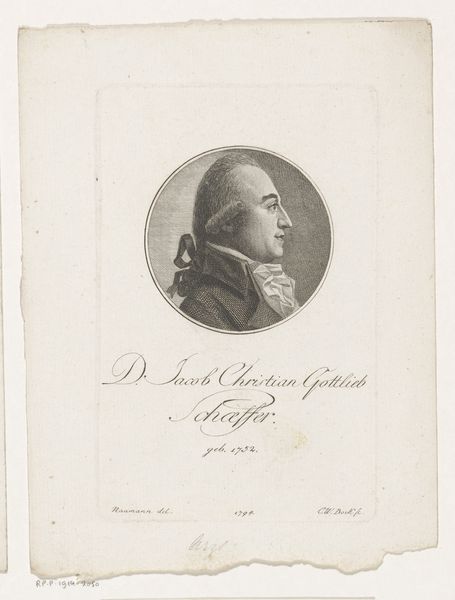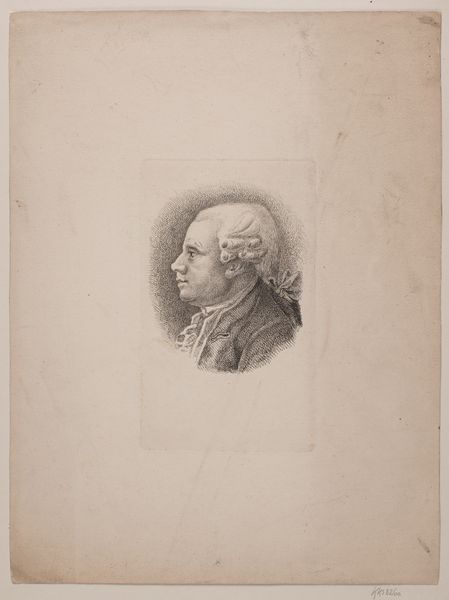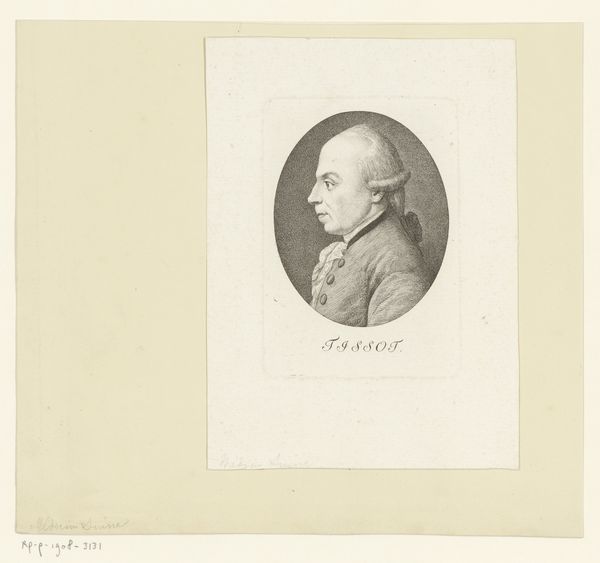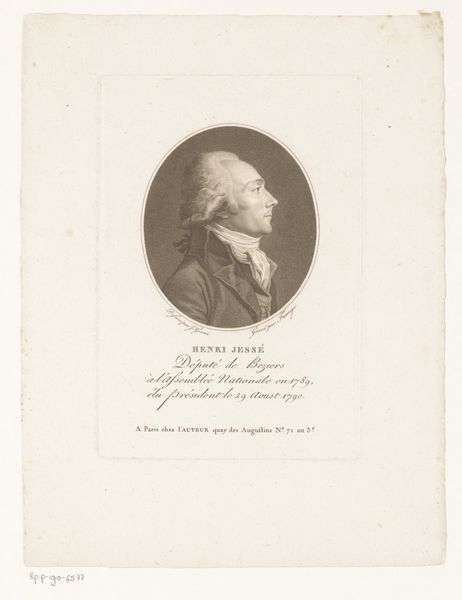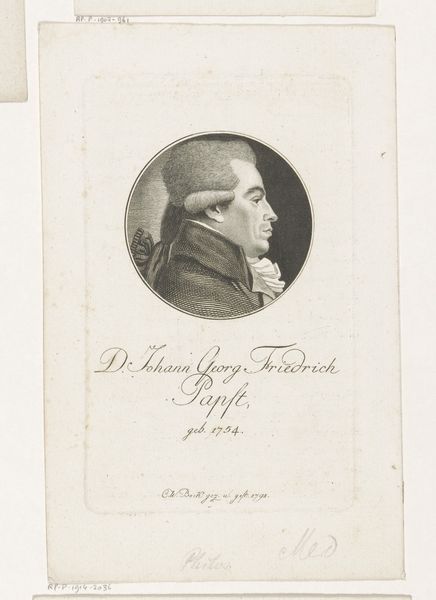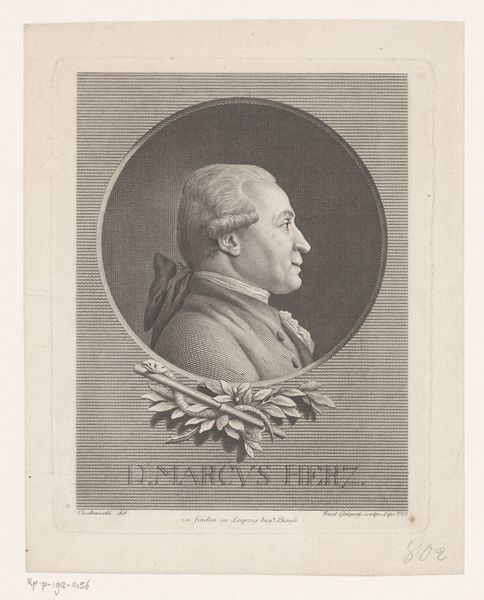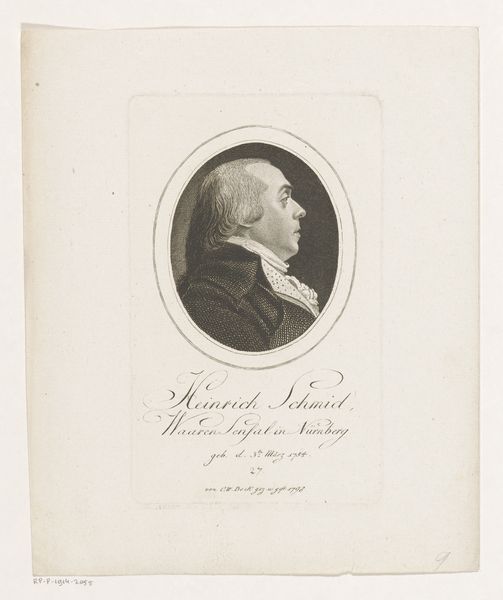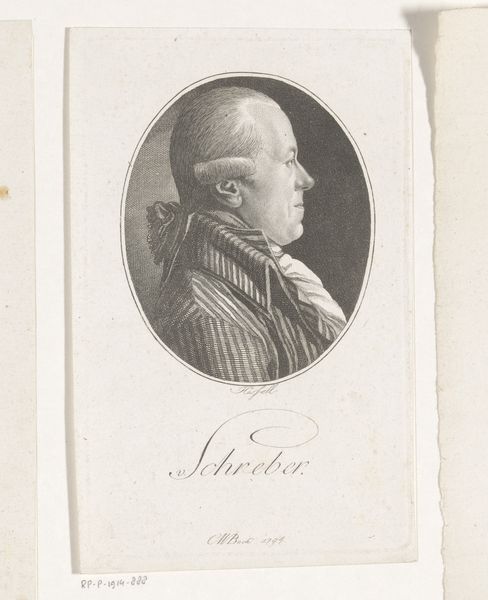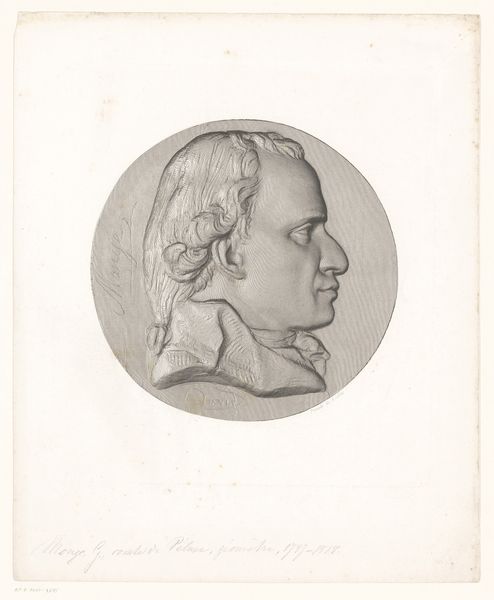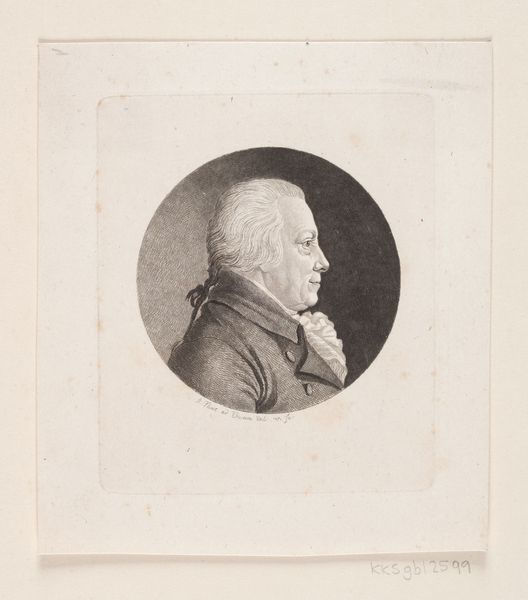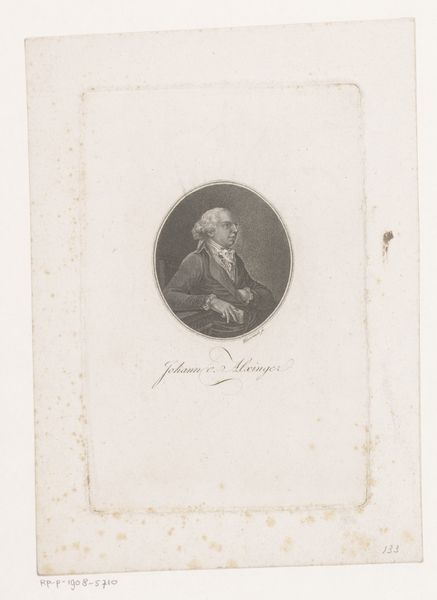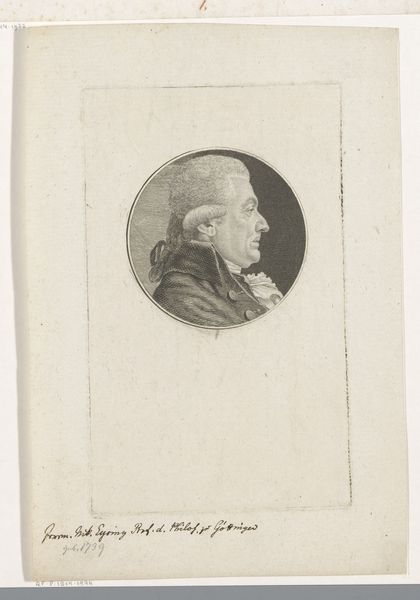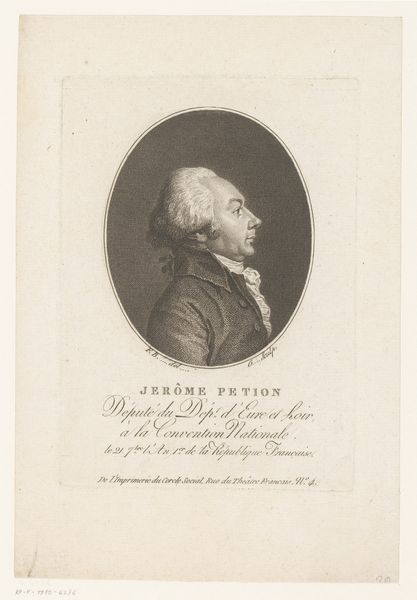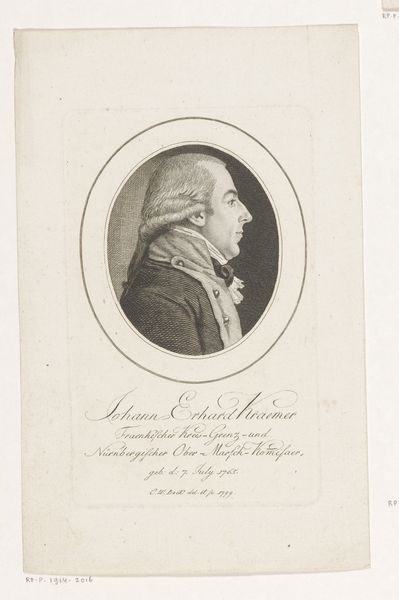
drawing, print, paper, engraving
#
portrait
#
pencil drawn
#
drawing
#
neoclacissism
#
toned paper
# print
#
paper
#
pencil drawing
#
line
#
history-painting
#
engraving
Dimensions: height 148 mm, width 92 mm
Copyright: Rijks Museum: Open Domain
Curator: Here we have an engraving from 1792, titled "Portret van Friedrich Dominicus Ring," found here at the Rijksmuseum. The artist responsible for this work is Christoph-Wilhelm Bock. Editor: Ah, a portrait! First glance, there's a quiet intensity in his gaze. It’s like he knows a secret—or maybe he’s just pondering what’s for dinner. The monochrome palette certainly lends a timeless feel to the whole thing, doesn't it? Curator: Indeed. The print uses a circular frame common in Neoclassical portraiture, echoing a fascination with classical antiquity. Ring himself, as a historical figure, surely occupied a specific position in society that shaped his very identity. The careful depiction emphasizes his status and the values of the time. Editor: Totally, it’s very formal, right? The wig is pretty extravagant but, if you look closely, it's like the artist allows a bit of humanity to peek through that carefully constructed facade. A very slight sense of melancholy maybe? Or, hell, indigestion, what do I know? Curator: His social standing dictated a certain level of decorum. This controlled representation aligns with Neoclassical ideals of order and reason that served specific class interests in the late 18th century. It's interesting to note what details were included to project social identity. Editor: And what isn't included! Like what was he into, did he like to dance, was he good to animals… haha! It really leaves a lot to the imagination, doesn't it? I'm definitely drawn to that subtle shading; it's masterful. It softens those rigid lines just enough. Curator: Absolutely, and we must consider the function of portraiture within the broader context of history painting and its use of historical and allegorical themes for political and moral instruction. Who got their portrait done, by whom, and why. Editor: To think of all those stories trapped within this small print…I could stare at it all day! Curator: Exactly! Visual culture offers valuable historical insight, and close readings such as these expand our understanding and interpretation of art. Editor: For sure. Every piece is just a springboard for endless thoughts… Okay, what’s next?
Comments
No comments
Be the first to comment and join the conversation on the ultimate creative platform.
